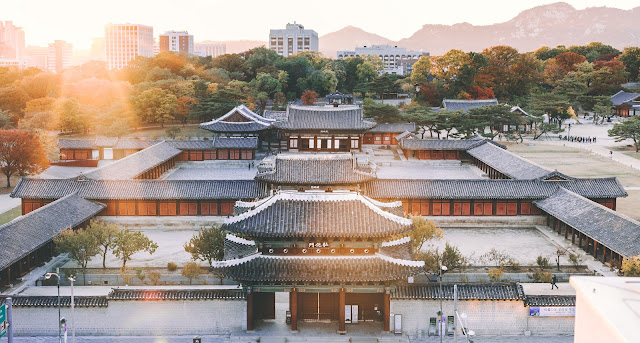Introduction
South Korea, a popular tourist and business destination, offers a wide range of attractions, from its historical palaces to the bustling streets of Seoul. As an international traveler, understanding the country's visa policy is crucial to ensure a smooth and enjoyable trip. This article will cover South Korea's visa policy, including visa requirements, visa-free travel, the ease of obtaining a tourist visa, electronic travel authorization, business visas, and student visas.
I. Who Needs a Visa
Travelers from different countries are subject to varying visa requirements when visiting South Korea. Nationals from countries with visa waiver agreements with South Korea are exempt from visa requirements for short-term visits. However, visitors from countries without such agreements must obtain a visa before entering the country.
II. Visa-Free Travel
South Korea offers visa-free travel to citizens of several countries, including the United States, Canada, Australia, New Zealand, and most European countries. The visa exemption is valid for tourism, family visits, and business purposes for stays up to 90 days. However, it is important to note that visa-free travelers cannot engage in employment or professional activities in South Korea without obtaining the appropriate visa.
The duration of the visa-free stay varies depending on the traveler's nationality:
90 days: Most countries, including the US, Canada, Australia, and EU nations.
60 days: Lesotho and Colombia.
30 days: Countries such as Russia, Barbados, and Fiji.
It is essential to verify the most recent visa-free travel information for your specific country, as these agreements are subject to change.
III. Tourist Visa: Application and Ease of Acquisition
For travelers who require a visa to visit South Korea, obtaining a tourist visa (C-3) is relatively straightforward. The application process typically involves the following steps:
- Complete the visa application form and gather necessary documents, including a valid passport, passport-sized photographs, proof of financial stability, and travel itinerary.
- Submit the application and required documents to the nearest South Korean embassy or consulate in your country of residence.
- Pay the required visa application fee.
- Wait for visa processing, which usually takes between 5 to 10 business days.
Although the process is generally hassle-free, it is advised to apply for a tourist visa well in advance of your intended travel date to avoid any unforeseen delays.
IV. South Korea Electronic Travel Authorization (K-ETA)
The Asian country has introduced an Electronic Travel Authorization system. The K-ETA will simplify the visa application process for short-term visitors from eligible countries by allowing them to obtain an electronic travel authorization online instead of a traditional visa.
Applicants will be required to provide personal information, passport details, and travel plans. Upon approval, the K-ETA will be sent via email and will be valid for multiple entries within a two-year period. Travelers must present their K-ETA upon arrival in South Korea. The introduction of the K-ETA aims to streamline the immigration process and improve security measures while maintaining the convenience of visa-free travel for eligible visitors.
V. Business Visa
For travelers intending to engage in business activities in South Korea, a business visa (C-2) is required. The application process is similar to that of a tourist visa, but additional documentation may be necessary, such as an invitation letter from a South Korean company and a letter from the applicant's employer, detailing the purpose of the visit.
The processing time for business visas is usually between 5 to 10 business days, but expedited processing may be available at an additional cost. A business visa typically allows stays of up to 90 days, but extensions may be granted under certain circumstances.
VI. Student Visa
Students planning to study in South Korea must obtain a student visa, also known as a D-2 visa. The process for obtaining a student visa involves the following steps:
- Receive a Certificate of Admission from the South Korean educational institution where you have been accepted.
- Complete the visa application form and gather necessary documents, including a valid passport, passport-sized photographs, proof of financial stability, and a certificate of your most recent educational background.
- Submit the application and required documents to the nearest South Korean embassy or consulate in your country of residence.
- Pay the required visa application fee.
- Wait for visa processing, which usually takes between 10 to 15 business days.
It is important to note that student visa holders are required to register at their local immigration office within 90 days of arrival in South Korea. Additionally, students may apply for a part-time work permit after six months of study, provided they maintain good academic standing.
Conclusion
Understanding South Korea's visa policy is essential for a successful trip to the country. Visa-free travel is available for citizens of many countries, while others will need to apply for a tourist, business, or student visa. The introduction of the K-ETA system will further streamline the visa application process for eligible visitors. As visa requirements and procedures are subject to change, it is always recommended to consult the latest information from official sources before planning a trip to South Korea.
FOLLOW MY ADVENTURES ON YOUTUBE @PinoyAdventurista
Thank You For Sharing! |




0 comments :
Post a Comment
Traveling soon?! Use my AGODA Promo Codes PINOYAGODA (for hotel discounts) and ADVENTURISTA (for tours and activities).
Looking for Budget Travel Guide Blogs, Hotel Reviews, and Sample DIY Itineraries?
Welcome to Pinoy Adventurista, "Your Next Ultimate Adventure Starts Here!"
Pinoy Adventurista is one of the Top Travel Blogs in the Philippines and the World. In 2013, he visited all the 81 provinces in the Philippines.